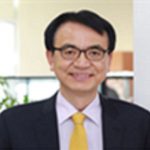A renewed perspective on Catholicism
I joined the Korean Ministry of Foreign Affairs in 1992. One of my reasons for joining was to broaden my horizon and mindset. I learned early on that common sense, as applied in Korea, is not always applicable in the rest of the world. I knew that if my experiences were multi-cultured, it would result in an unbounded and global mindset, one that I was yearning for. As expected, I experienced culture and religion through foreign service and was thankfully able to expand the scope of my mindset.
Before moving to Guam, I experienced Buddhism in Cambodia, Shinto in Japan, Hinduism in India, and Islam in Pakistan, just to name a few. After arriving in Guam, I experienced a new type of religion, Catholicism. Over the past few months, I have immersed myself in Guam, its culture and religion. I also wrote an article about Archbishop Flores’ awe-inspiring life journey. Through my research and experience, I now begin to appreciate a different outlook on Catholicism. I have made some observations as follows:
• Obituaries in the newspaper: If a family member passes away, it appears in the obituary section of the newspaper. This obituary is large in size. In most countries, obituaries are limited to a small square. However, Guam’s way of obituaries allows one to see a glimpse of a person’s life and the value and meaning of their life is perceived through the obituary.
• Catholic cemeteries: I was surprised to see the neat, diverse, and beautiful artificial flower arrangements at the Pigo Catholic Cemetery. I supposed that the preparation and upkeep of these final resting places are elaboration itself. I could clearly sense the heart and spirit of the loved ones just by looking at the floral arrangements/wreaths.
• The crosses on Mount Jumullong Manglo: I was deeply impressed to see 14 dilapidated wooden crosses on Mount Jumullong Manglo. It, in my opinion, serves as compelling evidence of the local people’s religious fervor to follow in the footsteps of Jesus Christ. Moreover, I have initially thought Mount Jumullong Manglo was Mount Lam Lam. But, on my third trekking attempt there, I learned that it was not Mount Lam Lam but was, in fact, Mount Jumullong Manglo. Through this experience, I realized that the truth is elusive and can sometimes be reached through ceaseless fact-finding efforts.
While learning more about the history of Guam Catholics, I came across the story of Monsignor Calvo who steadfastly contributed to setting up a Guam/Japan memorial site, now known as the South Pacific Memorial Park, through getting proper permits and/or active fundraising efforts in Japan and U.S.A. (federal and the Guam government). So, how did he contribute? Through an attitude of faith and hope, coupled with the ability to build strong coalitions with key stakeholders that allowed the manifestation of long-lasting peace. Having met some of the clergy members in Guam, I’m of the opinion that most of them, akin to most Guamanians, are faithful, sacrificial, resilient and peaceful.
It was far-fetched to me when I first discovered another example of the pursuit for peace in Guam in connection to Catholicism: Pale San Vitores Road and the nearby Matapang Beach in Tumon Bay. Padre Diego Luis de San Vitores was killed by Chief Matapang in 1672. This historical incident may be interpreted as an aspect of the clash of cultures. However, I felt as if the legacy of this cultural clash were sublimated into the noble example of coexistence on the island of Inafa’maolek.
Although my thoughts in this article are still a far cry from in-depth knowledge, I strongly believe that experience is the father of wisdom. Interestingly it used to take me at least two years to gain a robust perspective of the culture and social fabric of a new place. It is my earnest hope that I will get a better grasp of the culture and religion of Guam as I add to my truth-seeking days here.
***
In Kook Kim is the Head of Mission at the Consular Office of the Republic of Korea in Hagatna, Guam.




























